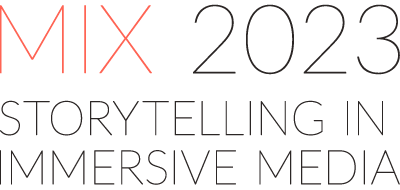Panel 9: Experiments with Liveness: Theatre, Audiences and Immersion
Chair: Ben Samuels
9.01 – Immersion in Digital Theatre for Remote Audiences
Amy Spencer (Bath Spa University)
The recent surge in remote theatre experiences has challenged theatres and theatre practitioners to think more than ever about remote audiences, their behaviours, their needs, the way they engage with and access work and the role they play in shaping a virtual performance. This paper seeks to understand how a remote theatre experience can be experienced by audiences, how they can be curated by theatre practitioners and explores emerging findings around liveness, hybridity and embodiment for remote audiences.
To do so, the paper presents a recent case study developed as part of MyWorld, a project supporting the development of the creative technology industry in the West of England. This case study follows the development of a remote performance of Nobel Prize winning author Olga Tokarczuk’s novel Drive Your Plow Over the Bones of the Dead, involving collaboration between the international touring company Complicité, Bristol Old Vic and several universities in the UK. In this project, audience data, including heart rate, was gathered by a team of psychologists, led by University of Bristol, to track long-form continuous immersion measures of audiences and analysed to understand audience experience.
This paper presents key findings from a case study that documented and reflected on the process of this research project. It reflects on how we can seek to understand the experiences of remote audiences through the use of technologically-led audience research, examines the concepts of liveness and immersion and explores their impact on remote experiences.
9.02 – Experimenting with the Hololens in the contexts of history and dance
Christine Chong (Tusitala)
In the past two years, digital storytelling studio Tusitala collaborated with HelloHolo, a Mixed Reality consultancy on two art tech projects. Both of these were experimental projects that focused on innovation and process rather than a polished final product.
The first was “The Colonel and the Hantu”,a mixed reality prototype that incorporates immersive sound, projection mapping and panoramic illustration. It is structured around a poetic monologue based on an incident from the Hikayat Abdullah, a 19th-century Malay literary and historical text. It came out of an Arts x Tech Lab 2021, an incubation programme organised by the National Arts Council of Singapore, which fosters collaboration between the arts and technology sectors.
In the second project, Tusitala served as mentors to two youth as part of a dance residency programme, focused on innovating with the Hololens device. One dancer used Hololens to share/uncover the auditory world to people with hearing impairment, while the other dancer created a conceptual performance art piece about online activity patterns, virtual presences, and AI.
I will share our main takeaways (read our guide here) and cover the following points, with a focus on defining “art tech” in terms of:
– An interactive multimedia experience that incorporates more “high” art elements (e.g., poetry, illustration, sound, movement, etc.)
– A process that covers both artistic freedom and experimentation, the use of digital tools to collaborate and prototype, as well as user experience frameworks and steps
– A potential business audience that goes beyond conventional arts projects (i.e., non-art museums and the tech world), given how they responded to our prototypes

